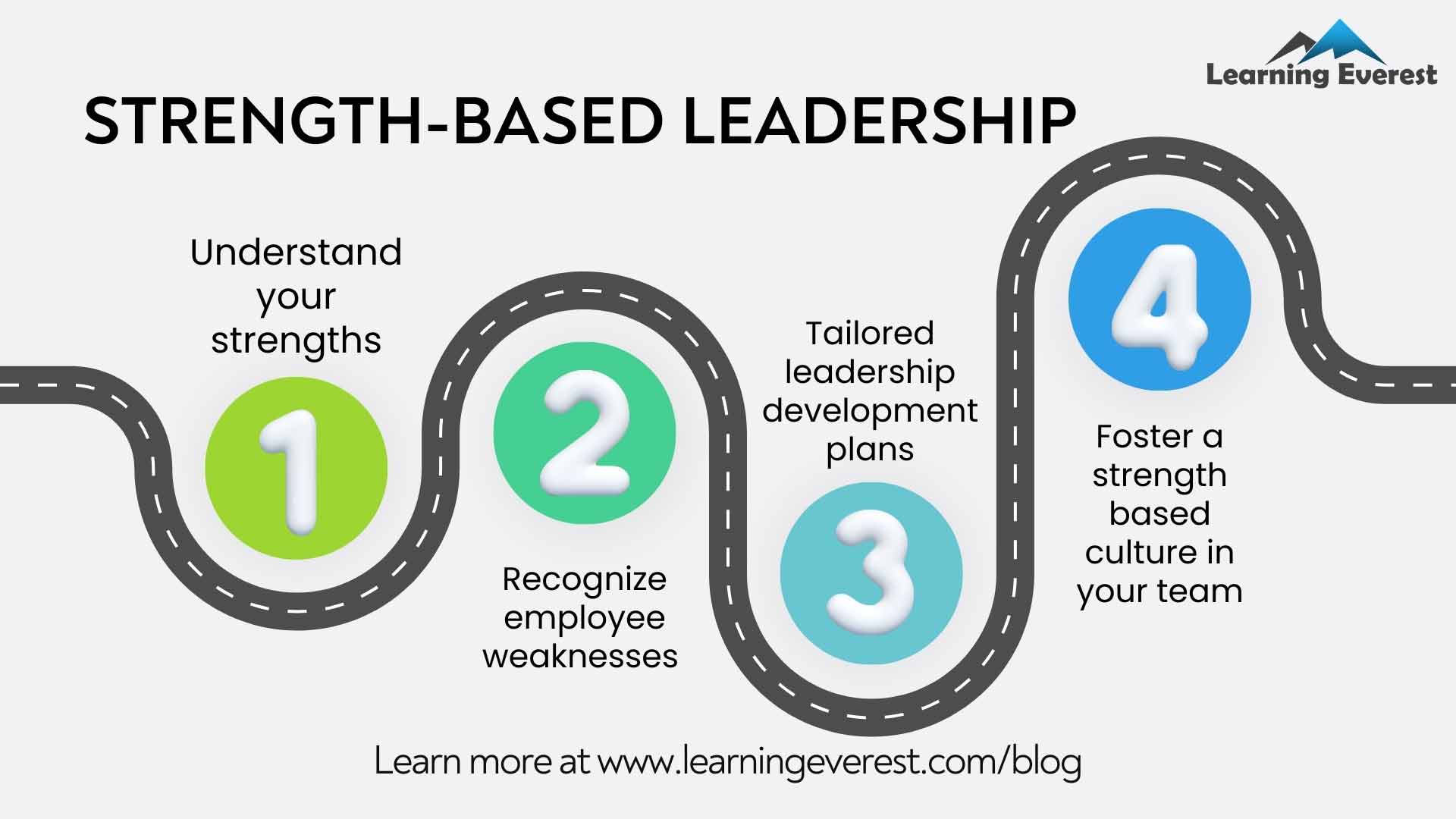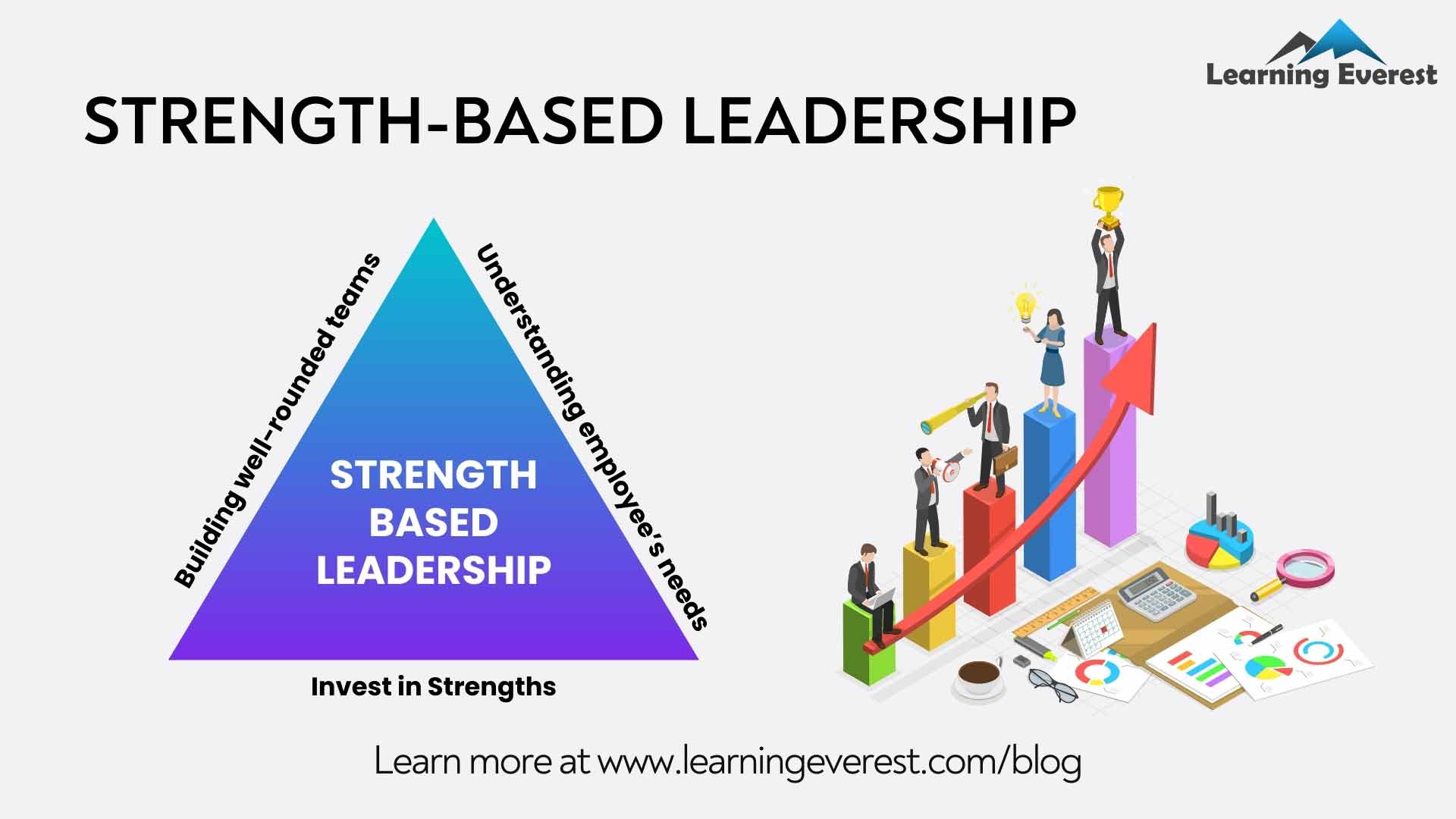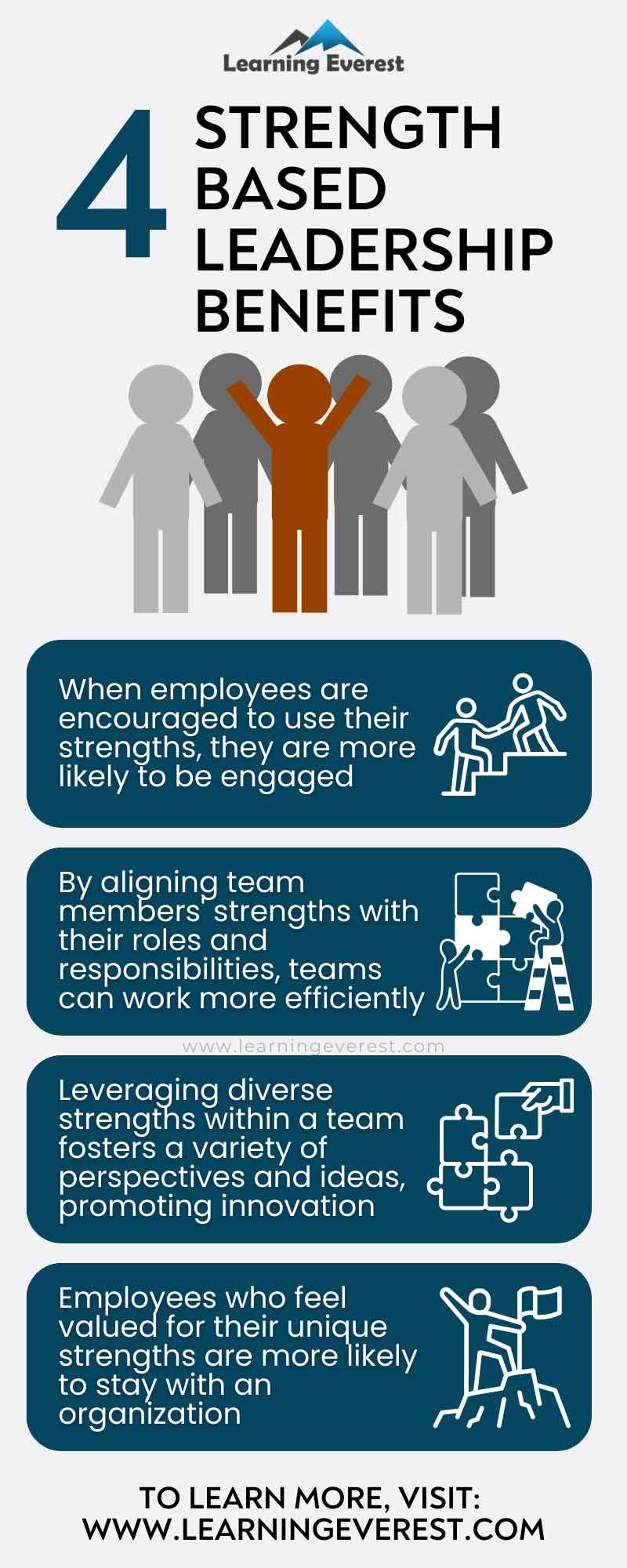What is strength-based leadership?
Strength-based leadership is the idea that an individual performs best when they can use their inherent talents and strengths. In simple words, this type of leadership is a shift from the conventional deficit-focused mindset, which often centers on identifying and correcting weaknesses. Instead, strength-based leadership encourages leaders to:
- recognize and understand their own strengths and talents
- provide opportunities for individuals to further develop and refine their strengths.
- match tasks and responsibilities with employees’ strengths to maximize efficiency and job satisfaction.


Strength-based leadership
The management empowers the employees by recognizing their strengths and weaknesses, placing them where they fit the best, and assigning them tasks where they are most useful. Strengths-based leadership also utilizes this approach when recruiting to create a diverse team and when building strength-based goals.
Why is strength-based leadership development important for leaders?
Leaders often face diverse demands, leaving them feeling overwhelmed. Emerging leaders, especially, may struggle with self-doubt and comparison to other leaders around them. We all have our own unique leadership styles based on our individual strengths. Trying to fit into predefined leadership boxes can be counterproductive. Because we simply don’t all thrive in the same environments. But we can all lead in our own unique way. Embracing your authentic self and understanding your strengths empowers you to build trust, achieve your goals, and establish meaningful relationships.


Role of strength-based leadership
The benefits of strength-based leadership include:
- When employees work in roles that align with their strengths, they are more likely to be engaged and motivated. This leads to higher employee productivity and job satisfaction.
- Strength-based leadership can lead to significant improvements in individual and team performance. By leveraging strengths, employees can achieve higher levels of efficiency and effectiveness.
- A focus on strengths fosters a positive and inclusive work environment. This can lead to stronger teamwork between employees, better communication, and a greater sense of community within the organization.
- Organizations that prioritize strengths are often more attractive to top talent. Furthermore, employees are more likely to stay with an organization where they can feel valued and can grow their strengths.
- When the employees are encouraged to use their strengths, they are more likely to think creatively and contribute innovative ideas. This can drive organizational growth and competitiveness.
How to implement strength-based leadership in your workplace?
Here is our four-step approach to developing your strength-based leadership programs:


The role of strength-based leadership
Let’s discuss the steps in detail now!
Step 1. Understand your strengths
Firstly you need to begin by using tools and assessments to recognize the strengths of each employee. These strengths assessments can provide valuable insights into individual talents and areas of potential growth. You can use a strengths assessment or self-reflection to identify your strengths and learn how they manifest in your work and life.
Step 2. Recognize employee weaknesses and manage blind spots
While focusing on your strengths, be aware of your weaknesses. We do not want to spend our energy trying to “fix” our weaknesses. We want the focus to be on our strengths. However, we do need to understand the impact our weaknesses can have on our work, motivation, and energy levels and devise strategies to mitigate them. You need to add strengths-based discussions into regular performance reviews and one-on-one meetings. You should also encourage employees to share how they are using their strengths and explore ways to align their roles with their strengths.
Step 3. Tailored leadership development plans
You need to develop personalized development plans that focus on enhancing strengths. Provide opportunities for employees to take on projects or roles that allow them to use and grow their strengths. You need to make sure that job roles and responsibilities are aligned with individual strengths. This may involve restructuring teams or reassigning tasks to better match employees’ strengths. Not only that! You should train leaders and managers in strength-based leadership principles. You need to equip them with the skills and knowledge to identify and nurture strengths within their teams. You should utilize your strengths to excel in these eight key leadership responsibilities:
- Building relationships
- Effective communication
- Inspiring others
- Leading change
- Developing people
- Critical thinking
- Problem-solving
- Creating accountability
Step 4. Foster a strength-based culture in your team
Once you have understood and learned how to apply your own strengths, extend the same understanding to your team members.
- Help them identify their strengths, address weaknesses, and collaborate effectively based on their team strengths profile.
- Implement recognition programs that highlight and reward the use of strengths.
- Celebrate successes and achievements that result from leveraging individual and team strengths.
So, have you been able to start your strengths-based development journey? Share your experiences and questions in the comments below.
Conclusion
In conclusion, strength-based leadership is not just a leadership style; it is a philosophy that can transform the way we work and lead. Strength-based leadership represents a powerful paradigm shift in how organizations approach talent management and leadership. By focusing on what individuals do best, organizations can unlock higher levels of engagement, performance, and innovation. By embracing the strengths of individuals, organizations can create a more positive, productive, and innovative workplace, ultimately driving success in an increasingly competitive world.
Infographic


4 Strength-based leadership benefits
Knowledge check!
Frequently Asked Questions (FAQs)
Q. What is strength-based leadership?
A. Strength-based leadership is the idea that an individual performs best when they can use their inherent talents and strengths.
Q. What are the four essentials of strength-based leadership?
A. The four essentials of strength-based leadership are executing, relationship-building, influencing, and strategic thinking.
Q. Why is strength-based leadership development crucial for leaders?
A. When employees work in roles that align with their strengths, they are more likely to be engaged and motivated. This leads to higher employee productivity and job satisfaction.